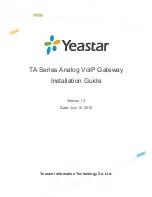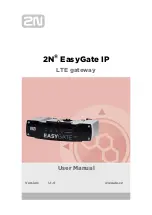
1-3
Cisco RF Gateway 10 Hardware Installation Guide
OL-16264-04
Chapter 1 Overview
Cisco RFGW-10 Functional Overview
Cisco RFGW-10 architecture is based on a centralized Layer 2 to Layer 4 Ethernet switch fabric. All
external Ethernet interfaces, whether on the line cards or on the Supervisor front panel, terminate at the
Supervisor engine’s switch fabric. Traffic on any of the external interfaces can be routed to any card in
the chassis.
The supervisor engine receives either DEPI (DOCSIS) data or Video data (MPEG/UDP/IP) and forwards
the data to the RF line cards based on either the DEPI session content (IP/L2TP) or encapsulated video
session information (IP/UDP). All data path traffic is terminated at the line cards. The supervisor
receives data traffic, classifies the traffic, and forwards the data traffic to the line cards.
Control traffic for DOCSIS (DEPI mode), Video, and HA functionality is terminated on the Supervisor.
Local video mode (CLI, GUI, SNMP), remote video mode control plane (DNCS, GQI), and Native video
mode (GQI v2, object model) are implemented in the IOS and terminate at the Supervisor.
The Cisco RFGW-10 supports redundant, DTI source device inputs as part of the system clocking
architecture. It includes redundant DTI/TCC cards, which support DTI client functionality.
All line cards and modules are redundant. The Supervisors (RPR, SS), TCC, and DC PEMs support 1:1
redundancy. The line card slots can be enabled in either a single N+1 redundancy configuration or a dual
redundancy configuration (N+1, M+1). RF data path redundancy is enabled by the integrated RF Switch
matrix, which supports dual redundancy groups.
The following sections provide a high-level overview of the downstream data path:
1.
Data packets are received by the Cisco RFGW-10 UEQAM via either the 10GE or multiple 1GE
interfaces.
2.
Data packets are received by the switch fabric on the Supervisor card (all external Ethernet ports
terminate at the Supervisor Switch fabric). The supervisor forwards data traffic to the line cards
based on the session information and IP address. For data traffic, the supervisor de-encapsulates
IP/LT2P DEPI traffic and for Video, the supervisor de-encapsulates based on the IP address/UDP
range information.
3.
All data path traffic terminates at the specific RF line card (chassis slots 3:12). All cards in the
system are synchronous to the DTI system clock reference.
4.
For DEPI traffic, the DS line card extracts L2TP header information, parses and processes DOCSIS
packets, re-stamps data with DOCSIS time stamps, and completes the J.83 FEC processing.
5.
For Video traffic, the DS line card classifies the video packets, manages intra-QAM scheduling,
PCR re-stamping, PID re-mapping, and J.83/FEC encoding.
6.
The J.83 FEC encoded data is forwarded to the upconverter module, which modulates, upconverts,
and forwards data downstream in MPEG-2/MPEG-4 encoding.
















































